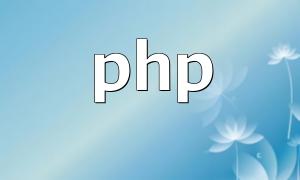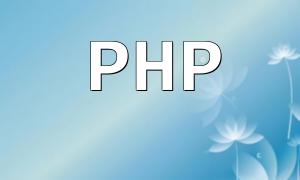PHP (Hypertext Preprocessor) is a widely used open-source scripting language, specifically designed for web development. Its ease of use and flexibility make PHP one of the most popular choices for dynamic web development. With PHP, developers can easily interact with databases, handle form data, and generate dynamic content.
Using PHP for dynamic web development mainly manifests in the following areas:
PHP is often used in combination with database management systems (such as MySQL), allowing dynamic webpages to store and retrieve data. When a user submits a form or requests certain information, PHP can perform the necessary database operations.
$conn = new mysqli($servername, $username, $password, $dbname); $sql = "SELECT * FROM users"; $result = $conn->query($sql);User authentication is indispensable in modern web applications. PHP offers many ways to handle user logins and registrations, ensuring the security of the system. For example, when storing user passwords, hash functions can be used for encryption to protect user privacy.
$passwordHash = password_hash($password, PASSWORD_DEFAULT);PHP can generate dynamic content based on different conditions. By using conditional statements and loops, developers can generate the required information in real time based on user input or requests. For example, displaying different product lists based on user preferences.
if ($userPreference == 'electronics') { echo "Display electronic products"; } else { echo "Display other products"; }Dynamic web development not only requires back-end processing but also front-end presentation. By using HTML, CSS, and JavaScript, developers can present the content generated by PHP in a user-friendly way. For instance, using AJAX technology to interact with PHP for content updates without refreshing the page, thus improving the user experience.
For dynamic webpages, search engine optimization (SEO) is equally important. Here are some SEO best practices followed in PHP dynamic web development:
Ensure that generated URLs are friendly and easy to understand. You can use pseudo-static techniques to convert dynamic URLs to static ones. For example, optimizing www.example.com/page.php?id=1 to www.example.com/page/1.
When generating dynamic webpages with PHP, ensure each page has a unique title and description to help search engines better understand the content of the page.
echo $pageTitle;Page load speed is an important factor affecting SEO. When using PHP, it's essential to properly implement caching techniques to reduce server load and improve page response speed.
In conclusion, PHP plays an indispensable role in dynamic web development. Mastering this technology allows developers to build efficient, interactive webpages and enhance their websites' performance in search engine rankings. Continuously learning and applying these key technologies will help developers succeed in the competitive field of dynamic web development.









